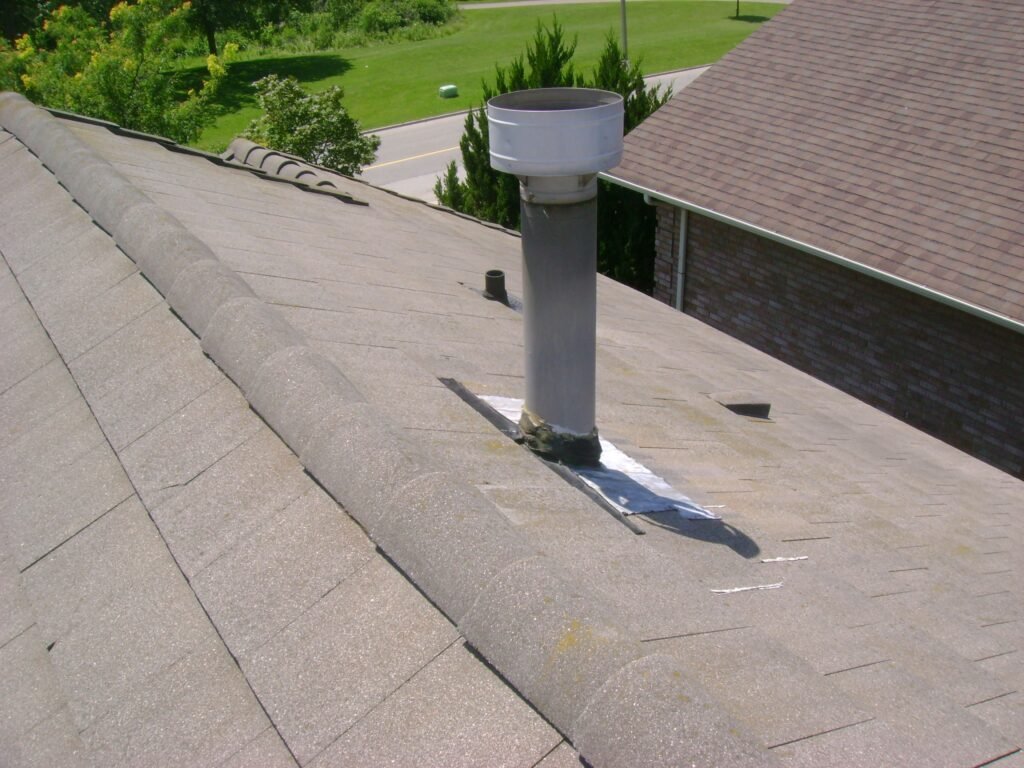Handling intake and exhaust roof vents is a diagnostic feature of roofing projects, as appropriate ventilation increases a building’s energy efficiency, improves comfort, and extends the roof’s lifespan. Best Roofers in Orpington approach intake and exhaust vent installation accurately, following best practices and industry standards to ensure the best airflow.
Importance of Roof Ventilation
Regulates Temperature:
Ventilation helps prevent heat buildup in attics during summer, reducing the load on air conditioning and enhancing energy efficiency.
Prevents Moisture Accumulation:
In colder months, ventilation prevents condensation buildup, which can lead to mold, rot, and other structural issues.
Prolongs Roof Lifespan:
Ventilation prevents excessive heat and moisture damage, which can degrade roofing materials and shorten the roof’s lifespan.
Enhances Indoor Comfort:
Well-ventilated roofs help maintain a balanced indoor temperature, making the space more comfortable year-round.
Key Steps in Handling Intake and Exhaust Roof Vents
Handling intake and exhaust vents requires a clear plan, precise execution, and quality materials. Here are the main steps that experienced roofers follow to ensure a successful roof vent installation:
Step 1: Assessment and Planning
The initial step is thoroughly assessing the roof’s existing ventilation and overall layout. The roofer evaluates:
Current Ventilation:
Determine the presence and functionality of existing vents and whether they meet current standards.
Attic Condition:
Inspect for moisture damage, mold, or excessive heat, which may indicate poor ventilation.
Ventilation Needs:
Calculate the necessary ventilation based on the attic or roof space size. Roofers follow the 1:150 or 1:300 rule, which stipulates one square foot of vent area for every 150 or 300 square feet of attic space, depending on conditions.
Building Codes and Manufacturer Guidelines:
Consider local codes and manufacturer guidelines to ensure compliance and warranty validity.
Step 2: Selecting the Right Type of Vents
Choosing the appropriate Intake and Exhaust Roof Vents is critical. Roofers consider factors such as roof pitch, climate, and architectural style:
Intake Vents:
To bring in fresh air, these are typically located at the roof’s lowest point, such as eaves or soffits. Common types include soffit vents, under-eave vents, and continuous vent strips.
Exhaust Vents:
These are fitted near the roof’s top to eject warm, moist air. Options include ridge vents, box vents, and turbine vents, each suited for specific roof types and needs.
Balanced Ventilation:
The roofer ensures intake and exhaust vents are balanced, meaning the air intake is equal to or slightly greater than the exhaust. This balance prevents pressure issues and maximizes airflow efficiency.
Step 3: Marking and Preparing Vent Locations
Proper vent placement is essential for effective airflow. Roofers take the following approach:
Measuring and Marking:
Mark precise locations for both intake and exhaust vents. Intake vents are spaced evenly along the eaves, while exhaust vents are positioned closer to the roof peak to create a steady upward airflow.
Avoiding Obstructions:
Roofers check for obstacles, such as beams, insulation, or HVAC systems, that could impede airflow. They also ensure no intake vents are placed too close to exhaust vents, which could cause short-circuiting (when intake air exits immediately instead of circulating).
Step 4: Installing Intake Vents
For intake vents, the installation process often involves:
Cutting Soffit Openings:
Carefully cut openings in the soffit or eaves, ensuring the holes are precisely aligned with the vent locations.
Installing Vent Screens:
Place mesh screens to prevent pests and debris from entering the intake vents while allowing airflow.
Securing Vents:
Secure intake vents to prevent loosening, water intrusion, or pest infiltration.

Step 5: Installing Exhaust Vents
For exhaust vents, the process varies based on the vent type:
Ridge Vents:
Roofers cut a slot along the roof ridge, avoiding ridge beams and ensuring uniformity along the entire ridge. The ridge vent is fitted over the slot, allowing continuous airflow.
Box Vents and Turbine Vents:
These are placed closer to the peak and require precise openings cut into the roof deck. Roofers use flashing and sealants to secure these vents and prevent leaks.
Step 6: Sealing and Weatherproofing
Sealing is crucial for durability and leak prevention. Roofers:
Apply Flashing and Sealant:
Use flashing around each vent to create a watertight seal, particularly for exhaust vents. Sealant is applied to vulnerable areas for added protection.
Install Drip Edges:
Drip edges direct water away from vent openings in intake vents, reducing moisture exposure and potential damage.
Use Appropriate Materials:
Roofers select weather-resistant materials, especially in extreme temperatures or heavy precipitation regions.
Step 7: Testing and Final Inspection
Upon installation, roofers perform a final inspection to ensure proper functionality:
Check Airflow Balance:
They confirm that intake and exhaust vents are balanced, which might involve airflow testing to verify circulation.
Inspect for Leaks:
Testing for potential leaks around the vents is essential, especially after heavy rain, to ensure effective weatherproofing.









